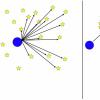Is T-12 enough time for pterostilbene (as opposed to resveratrol) ?
Google lists the half life thusly:
"Pterostilbene has a longer half-life (105 minutes versus 14 minutes) and higher oral bioavailability (80% versus 20%) compared to resveratrol [4–7]. Pterostilbene also has low total body clearance and subsequent Vss which suggests extensive tissue distribution [4]."
I found loading butyrate immediately post workout to increase the hangover feeling that Seems to follow several hours after. The effect was too strong with 6g and I ended up feeling quite ill for about two hours with severe headache, sweats and alternating fever / chills feeling followed by mild euphoria. The second time I tried it I used 2g and the headache was mild and only a comfortable sweating increase. So my guess is doing this increases mitopahgy but it's purely subjective....I haven't ruled out other possibilities including too much sodium, since I take 2.5g sodium in my workout drink.
http://m.pnas.org/co...1/52/18030.full
"Autophagic cell death is another important physiological cell death process. This mode of cell death is characterized by massive degradation of cellular contents, including essential organelles such as mitochondria, by means of complicated intracellular membrane/vesicle reorganization and lysosomal activity (12–16). It is involved in development and stress responses and has been observed in multiple neurodegenerative diseases (12–16). Because the mechanism is not well defined, some autophagic cell death events might have been attributed to apoptosis. Moreover, these two modes of cell death frequently occur in parallel. For example, gene profiling of Drosophila cells undergoing steroid-induced developmental cell death identified clustered up-regulation of several apoptosis-related genes with autophagy-related genes (17, 18); deprivation of neural growth factor induced simultaneous autophagic and apoptotic cell death in primary sympathetic neurons (19). However, caspases are not required for autophagic cell death (12–16), and Bcl-2 and Bcl-XL do not inhibit autophagic cell death in a mammary epithelial morphogenesis model (20). Furthermore, like apoptosis, autophagic cell death is involved in tumorigenesis: autophagic activity was found to be suppressed in malignant tumors (16); some autophagic regulators, such as Beclin 1 (21–24) and death-associated protein kinase (25–28), are putative tumor suppressors. Currently, there is no cancer therapeutic approach that specifically targets the autophagic cell death machine.
It has been reported that histone deacetylase (HDAC) inhibitors preferentially kill transformed cells or cancer cells in both cell cultures and animal models (29). These compounds also induce cell growth arrest and differentiation. Such properties make them good candidates for targeted therapies. According to their chemical structures, HDAC inhibitors can be classified into several groups, including (i) short-chain fatty acids, such as sodium butyrate; (ii) hydroxamic acids, such as suberoylanilide hydroxamic acid (SAHA) (30); and (iii) cyclic tetrapeptides, such as trapoxin.
HDAC inhibitors can increase acetylation of histones and various other proteins. HDAC, along with their counterparts, histone acetyl transferases, regulate the status of histone acetylation and thus are involved in transcriptional regulation and cell differentiation (31, 32). Because HDAC are overexpressed in many cancers, and the death-inducing capability of different HDAC inhibitors correlates with their HDAC-inhibitory potency, it is widely accepted that the cell death-inducing function of HDAC inhibitors is due to their ability to inhibit HDAC activity (29, 33).
However, the mechanisms by which HDAC inhibitors induce cell death are not well understood. In this report, we used genetically engineered cell lines to dissect the molecular determinants of cell death induced by butyrate and SAHA, two HDAC inhibitors from different structural classes. We found that HDAC inhibitors induced both apoptosis via the cytochrome c-mediated caspase activation pathway and caspase-independent autophagic cell death. Induction of two modes of programmed cell death by HDAC inhibitors indicates that these drugs might be particularly valuable when treating cancers with apoptotic defects."
Edited by zorba990, 02 August 2017 - 11:56 PM.

































 This topic is locked
This topic is locked



























